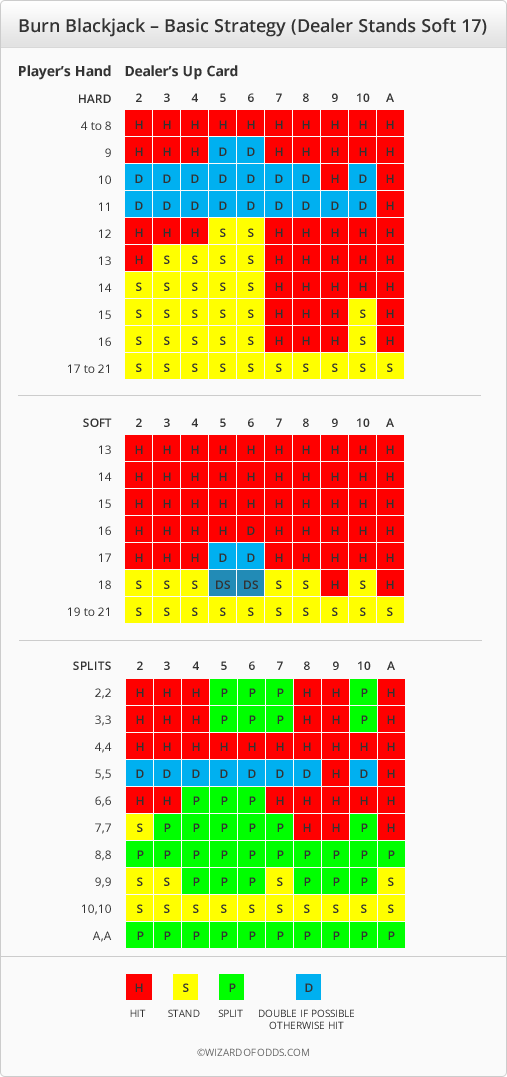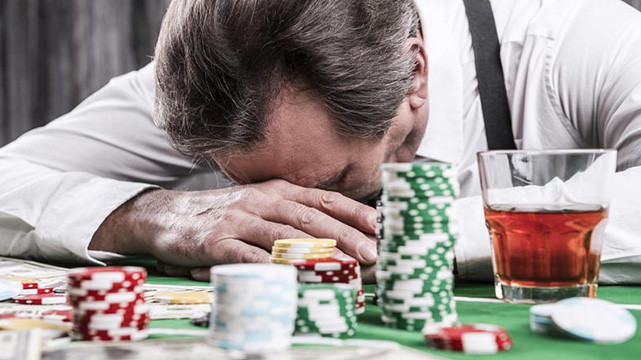Suggesting all games are played with six decks - which is a common size for a blackjack shoe - Spanish 21 has the best house edge for the player according to the blackjack house edge table on top of this page. Standard 21 Blackjack is good too since you can actually have the edge by playing perfect basic strategy with a single deck. The house edge percentage in blackjack is 0.5%. This is determined by players effectively using basic blackjack strategy but will alter based on how well a strategy is executed. For more experienced players who use advanced blackjack strategies, the house edge can be reduced further towards zero. Long one of the world’s most popular card games blackjack is a game of both skill and chance. Learning blackjack basic strategy can dramatically reduce the house edge and increase your odds of winning one of the most fun and exciting casino games around. Blackjack has long been one of the most popular casino games in the world.
Most players understand that the casino holds an advantage in blackjack. This advantage is known as the house advantage or house edge, and is usually under 1% in most blackjack games, provided players play using the optimal basic strategy under the rules of the game they’re playing.
What does the house edge or advantage mean? It is an expression of how much of each unit wagered that the casino can expect to win on average. In other words, if the house advantage is 1% and you make bets of $100, you can expect the casino to win $1 for every bet you make over the long run. The results of doubling down, splits, blackjacks and everything else are included in that calculation.

Obviously, no bet in blackjack would cause you to lose exactly $1 on any given $100 bet. However, if you played tens of thousands of hands, or looked at the aggregated results of thousands of customers playing at the casino, you would see that the casino was coming out ahead by about that 1% margin. This assumes of course that everyone plays perfect basic strategy. The reality is that casinos make more than that because of players that don’t know about basic strategy or prefer to gamble and bet with their gut when they are feeling lucky.
Blackjack Rules and the House Edge
Not surprisingly, different blackjack rules can have an impact on the size of the house edge. Some rules variations are beneficial to the player, while others increase the casino’s advantage.
The following is a rundown of how different rule changes can affect the house advantage. Credit to The Wizard of Odds for their excellent analysis of how rules affect the casino’s advantage. All rule changes and their effects are rated against a typical game with the following rules: a blackjack game with an eight deck shoe, where the dealer stands on all 17s, the player may double on any two cards, the player can double down after splitting, and the maximum number of hands the player may split to is four. This game would have a house edge of about 0.45%.
Remember, the lower the house edge the better. So negative values below are better for the player while positive values are better for the casino.
Promotional Rules
Many promotional rules are sometimes offered which can offer a lot of help to the player. For instance, if blackjacks pay 2-1, the house advantage is reduced by 2.27%. The following are some possible promotional rules variations that help the player, along with the amount by which they reduce the house edge:
- All blackjacks pay 2-1: -2.27%
- Triple down: -1.64%
- Five card Charlie: -1.46%
- 2-1 on suited blackjacks: -0.57%
- Six card Charlie: -0.16%
- Seven card Charlie: -0.01%
Using Fewer Decks
Most players have heard that blackjack games with fewer decks are friendly to players, but you might be surprised to find that the differences between these games are relatively small. In fact, the player will see almost no advantage unless only one or two decks are being used. Here’s how reducing the number of decks affects the house advantage:
- Six Decks: -0.02%
- Five Decks: -0.03%
- Four Decks: -0.06%
- Two Decks: -0.19%
- One Deck: -0.48%
Changing How the Dealer Plays
One of the biggest rules variations between various casino blackjack games is whether the dealer stands on all 17s, or hits on soft 17s (an Ace with another card or cards that total up to 17). The common rule of standing on all 17s is actually better for the player.
- Dealer hits on soft 17: +0.22%
Player Options
Changing the options available to the player can also have an impact on the house edge. For instance, allowing surrender, the option to hand in your cards and get half your money back before the hand is played, reduces the house edge. Allowing this before the dealer checks for blackjack is known as early surrender, while allowing it only after the dealer has checked for blackjack (and not received one) is known as late surrender. This is the effect of some common player-friendly rule variations:
- Early surrender against an Ace: -0.39%
- Late surrender against an Ace: 0%
- Early surrender against a Ten: -0.24%
- Late surrender against a Ten: -0.07%
- Hit after splitting Aces: -0.19%
- Drawing a Ten after splitting Aces counts as blackjack: -0.19%
However, in most cases, casinos are more likely to eliminate player options rather than give players a helping hand. Here are some rule changes that limit what the player can do, and their associated increases in the house advantage.
- Players can only split to three hands: +0.01%
- Players can only split to two hands: +0.10%
- Players may double down only on 9, 10 or 11: +0.09%
- Players may not double down after splitting: +0.14%
- Players may not split aces: +0.18%
Blackjack Short Pays
Perhaps the worst rules variation that can be found at casinos these days is the short pay blackjack. Traditionally blackjacks will pay 3-2 on your wager, meaning our example $100 bet wins $150. However, some casinos, particularly in Las Vegas, are now dealing blackjack games that offer less than this. While it may seem like a minor change, even a small reduction in the odds paid for a blackjack can have a huge impact on the house edge, turning what looks like a good blackjack game into a poor one. You should be particularly wary of games advertising “player friendly” rules such as single deck blackjack that only pay 6-5 or worse on a blackjack. Here’s how short paying blackjacks increases the house edge:
- Blackjack Pays 7-5: +0.45%
- Blackjack Pays 6-5: +1.39%
- Blackjack Pays 1-1: +2.27%
Casino House Advantage Infographic
Related News
Long one of the world’s most popular card games blackjack is a game of both skill and chance. Learning blackjack basic strategy can dramatically reduce the house edge and increase your odds of winning one of the most fun and exciting casino games around.
Blackjack has long been one of the most popular casino games in the world. Dating back to France in the early 1700s, today this elegant game of both luck and skill can be found in every major casino, whether land-based or online, in the world. The draw of blackjack lies not only in its simplicity but also in the fact that mathematicians have shown us that it is a game in which you can actually beat the house if you are persistent and diligent enough in applying basic blackjack strategy.
In this article, we’ll provide you with some insights of the basic blackjack strategy you need to know to be able to have a ton of fun, beat the house, and walk away from a winner.
What is the house edge?
First off, let’s talk about the house edge. As you know, all casino games have a house edge that gives the casino an inherent advantage and keeps them in business. It doesn’t matter whether you’re playing in Las Vegas, Atlantic City, Macau or at your favorite online casino, the house edge is always there in every game you play. Games like Keno, with a house edge ranging from 25%-29% or Casino War, with a house edge for a tie bet at 18.65%, are some of the worst casino games to play as they have the highest house edge.
Classic and Live Dealer Blackjack, on the other hand, with the dealer standing on a soft 17, has a house edge of just 0.28% when played using blackjack basic strategy. Obviously, that’s a huge difference in your favor as long as you effectively use basic blackjack strategy and one of the things that have helped blackjack keep its place as the world’s most popular casino card game throughout the ages. The key to successful blackjack play, enhancing your fun and your bankroll, is knowing when to stand, hit, split, double down or surrender.
Join MyBookie now! The NO-nonsense USA gambling site!Bonus:150% up to $750
Play NowWhen to hit or stand
While famous card counters like the MIT team, Edward Thorp or Ken Uston popularized the notion that you could get seriously rich playing blackjack properly as long as you were a mathematical whizz kid, you don’t have to be a maths genius to employ blackjack basic strategy and dramatically increase your chances of walking away from the table a winner.
When it comes to basic blackjack strategy, it all starts with knowing when to hit or stand. There are two main types of hands in blackjack, hard and soft. Hard hands refer to the possibility that the player or dealer will go bust (go over 21) on the next hit. A soft hand is one in which the player or dealer has an ace that counts as 11 instead of 1.
The rules regarding when to stand or hit, then, are as follows:
- If the dealer has a 4-6 and you have a hard 12 – always stand
- If the dealer has a 2-6 and you have a hard 13-16 – always stand
- If you have a hard 17 – always stand
- If you have a soft 19 or more – always stand
- If you have a soft 18 – always stand, unless the dealer has a 9, 10 or ace, then hit
- Always hit on a soft 17 or less
- Always hit on a hard 11 or less
When to split in Blackjack
Basic Strategy Blackjack Test
When it comes to basic blackjack strategy, knowing when to split is also an essential skill. In almost all versions of blackjack, you’ll be given the option to split your hand into two separate hands if you’re dealt a pair. You double your bet but are now playing two hands (or possibly more, as some versions of blackjack will give you the option to re-split if you’re dealt another pair) against the dealer. The rules regarding when to split are as follows:
- Always split aces
- Always split 8s
- Always re-split the above if given the chance
- Never split 10s
- Never split 5s
- Never split 4s
- Only split 2s, 3s or 7s if the dealer has a 7 or lower
- Only split 6s if the dealer has 2-6
When to double down in Blackjack
Doubling down in Blackjack is the opportunity to double your initial bet after you have seen your first two cards but limits you to only one additional card after your bet. Statistically speaking, as each deck of cards in blackjack holds 16 cards that equal 10, if the two cards you are dealt first equal 10 or 11, doubling down is your best bet to maximize your possible winnings.
Experts also say that if the dealer is showing a 5 or a 6, also known as “bust cards”, and you hold an ace together with a 2, 3, 4, 5 or 6, doubling down is your best bet as you are more likely to be helped than hurt by the remaining cards in the deck.
When to surrender in Blackjack
Certain variations of blackjack will give you the option to surrender. This means, in the event, you’re dealt a terrible hand, you have the option to forfeit the hand and retain half your bet. The logic behind when to surrender and when not to revolves around the particular type of blackjack you are playing. i.e. whether the dealer is required to hit or stand on a soft 17.
If the dealer is required to stand on a soft 17, then it is advisable to surrender if you have 16 and the dealer has a 9, 10 or ace. However, this changes in the event you have a pair of 8s, in which case you should split instead of surrender.
If the dealer is required to hit on a soft 17, then it is advisable to surrender on a 15 or 17 if the dealer is showing an ace or if you have a pair of 8s and the dealer has an ace. If the dealer has anything else, the pair of 8s should be split.
Conclusion
Learning and effectively using blackjack basic strategy will not only dramatically alter the odds and lower the inherent house edge in your favour but allows you as the player to take ever greater control of your game, making the experience of playing one of the world’s most beloved casino card games immensely more fun, thrilling and profitable! Get into your game today and use basic blackjack strategy to turn an otherwise casual and fun game of cards into a truly winning proposition.
Join MYB Casino now! The NO-nonsense USA gambling site!Bonus:200% up to $1,000
Play Now Guides11 Legendary And Famous Blackjack PlayersAllstar GamblingDecember 4, 2020GuidesMartingale System (Blackjack Betting)Allstar GamblingOctober 22, 2020GuidesSlot Tournaments – How Do They Work and How to WinAllstar GamblingJuly 30, 2020
Guides11 Legendary And Famous Blackjack PlayersAllstar GamblingDecember 4, 2020GuidesMartingale System (Blackjack Betting)Allstar GamblingOctober 22, 2020GuidesSlot Tournaments – How Do They Work and How to WinAllstar GamblingJuly 30, 2020Latest Post
Guides11 Legendary And Famous Blackjack PlayersTop 5 Casinos
Bonus:200% up to $1,000
Play NowBonus:300% up to $3,000
Play NowBonus:500% up to $3,000
(CODE: ASGBSC)
100% up to $1,000
Play NowBonus:Basic Blackjack Strategy Chart

300% up to $2,000
 Play Now
Play NowClaim $215 in exclusive No Deposit Free chips
Sign up with AllStar Gambling for FREE to take advantage of this one-time offer! PLUS many more promotions for players from the USA based on your location and gambling preferences!
Blackjack Basic Strategy Engine
Please share your location to continue
